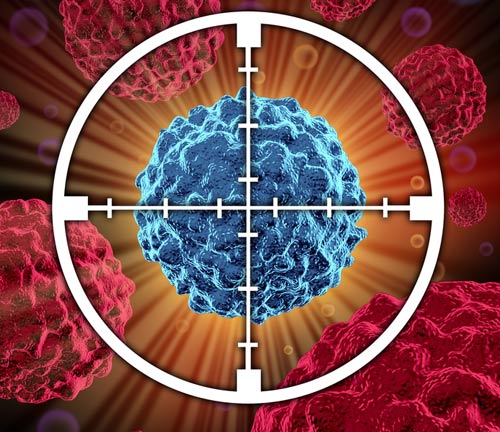A team of researchers from LMU, the Technical University of Munich (TUM), and Helmholtz Munich reports a novel method that highlights the potential of artificial DNA structures that, when fitted with antibodies, instruct the immune system to specifically target cancerous cells.
The findings are published in Nature Nanotechnology in an article titled, “Programmable multispecific DNA-origami-based T-cell engagers.”
“Multispecific antibodies have emerged as versatile therapeutic agents, and therefore, approaches to optimize and streamline their design and assembly are needed,” the researchers wrote. “Here we report on the modular and programmable assembly of IgG antibodies, F(ab) and scFv fragments on DNA origami nanocarriers. We screened 105 distinct quadruplet antibody variants in vitro for the ability to activate T cells in the presence of target cells. T-cell engagers were identified, which in vitro showed the specific and efficient T-cell-mediated lysis of five distinct target cell lines. We used these T-cell engagers to target and lyse tumor cells in vivo in a xenograft mouse tumor model.”
“The centerpiece is a tiny chassis of folded DNA strands that can be specifically fitted with any antibodies,” explained Sebastian Kobold, MD, PhD, professor at LMU and one of the main authors. At Munich University Hospital, his team investigated the impact of the new substrates both in vitro and in vivo.
This novel class of agents, coined programmable T-cell engagers (PTEs), are created with DNA origami, a nanotechnology in which self-folding DNA strands assemble themselves into a structure simulated in advance on the computer. Their design allows different antibodies to be attached in four positions. Antibodies that specifically bind to certain tumor cells are added on one side, while antibodies that are recognized by the immune system’s T cells are mounted on the other. T cells then destroy the marked cells. “This approach permits us to produce all kinds of different PTEs and adapt them for optimized effects,” said Adrian Gottschlich, PhD, one of the study’s lead authors. “Infinite combinations are in theory possible, making PTE a highly promising platform for treating cancer.”
The scientists produced 105 different combinations of antibodies for the study, testing them in vitro to see how specifically they attached themselves to the target cells and how successful they were at recruiting T cells. The researchers demonstrated that more than 90% of the cancer cells had been destroyed after 24 hours. To find out whether this also worked in living organisms, Kobold and his colleagues examined whether PTEs also recognize and induce the destruction of cancer cells in tumor-bearing organisms. “We were able to prove that our PTEs made from DNA origami structures also work in vivo,” Gottschlich affirmed.
Gottschlich explained that thanks to the possibility of mounting different antibodies at the same time, tumor cells can be targeted much more precisely.
Kobold is confident: “We believe that our findings will permit the clinical testing of DNA nanotechnologies and demonstrate the potential of biomolecular, DNA-origami-based engineering strategies for medical applications.”



